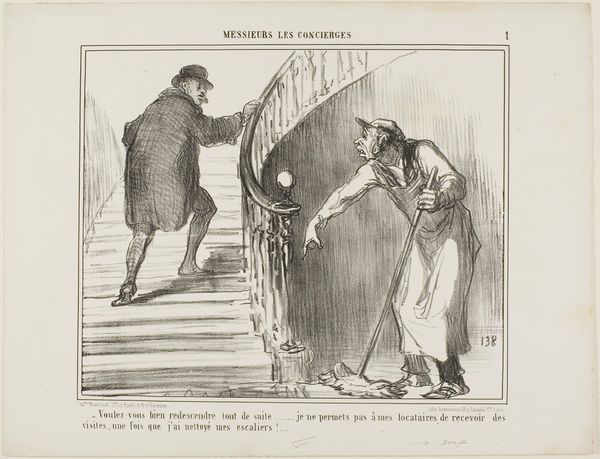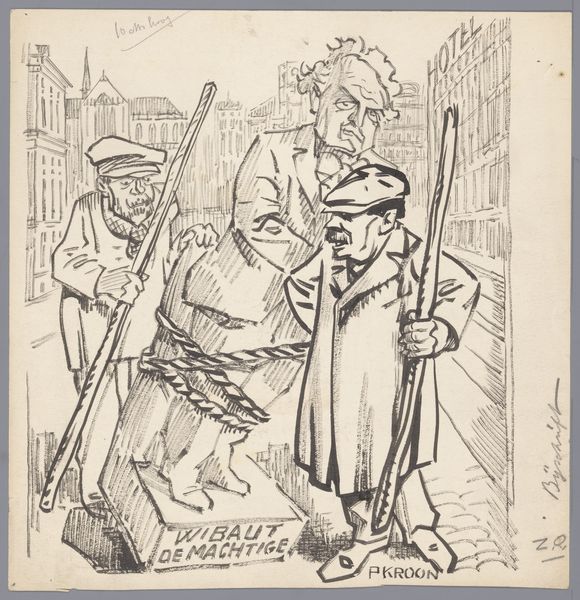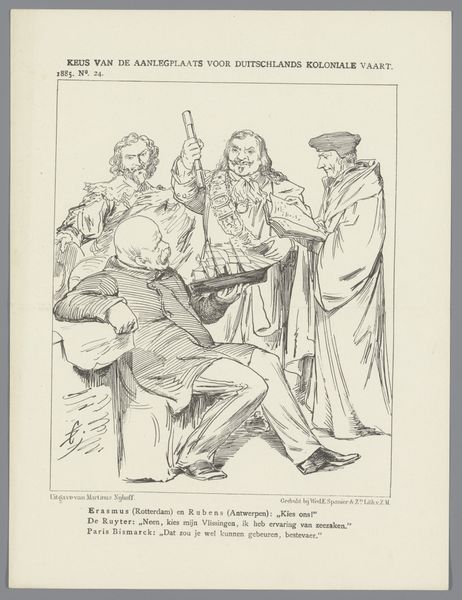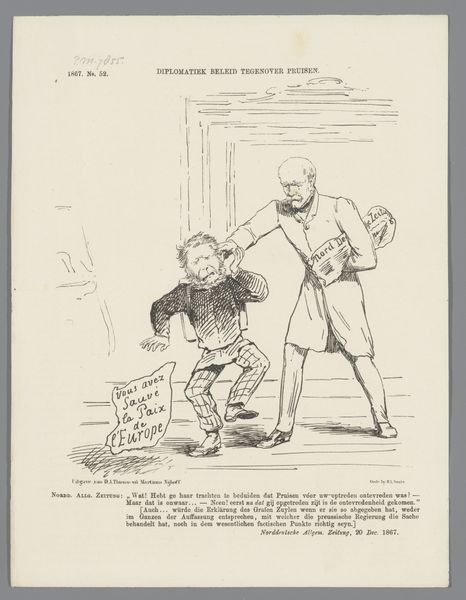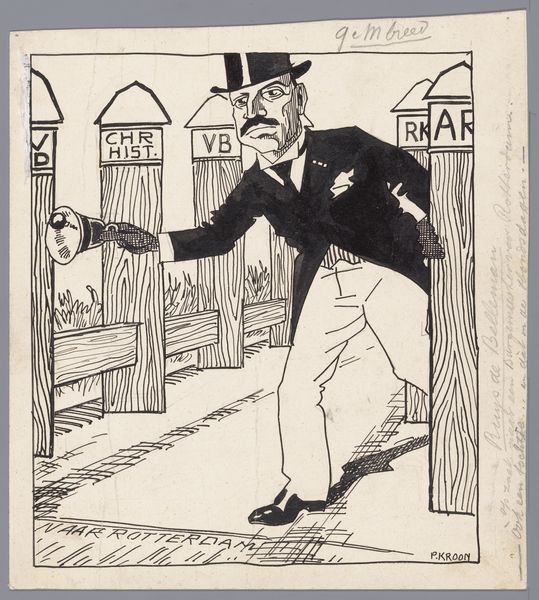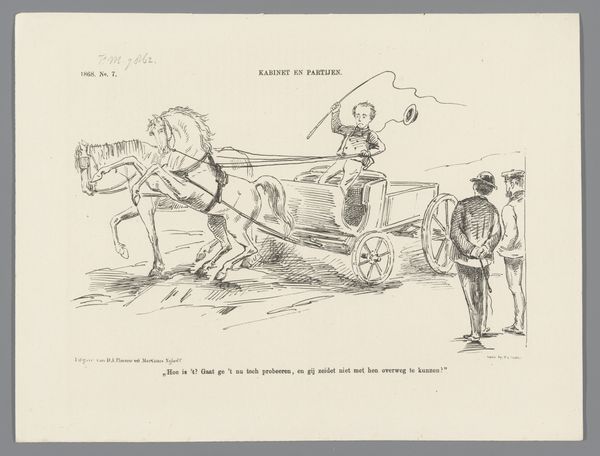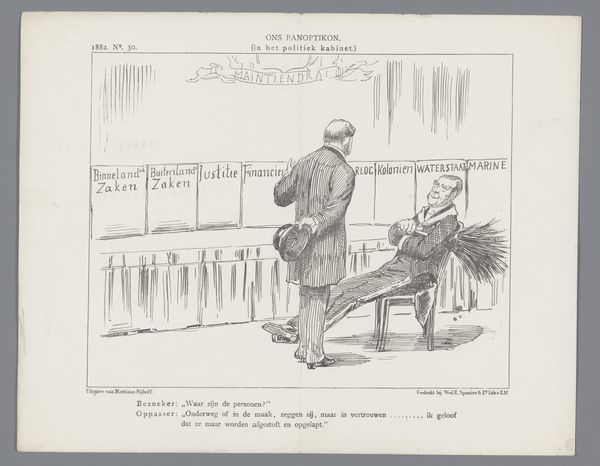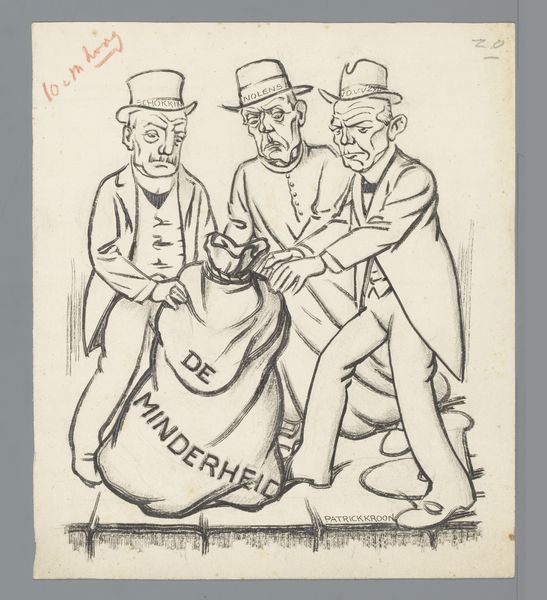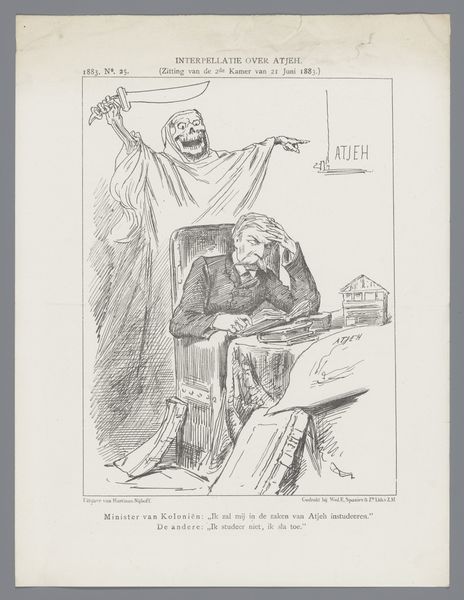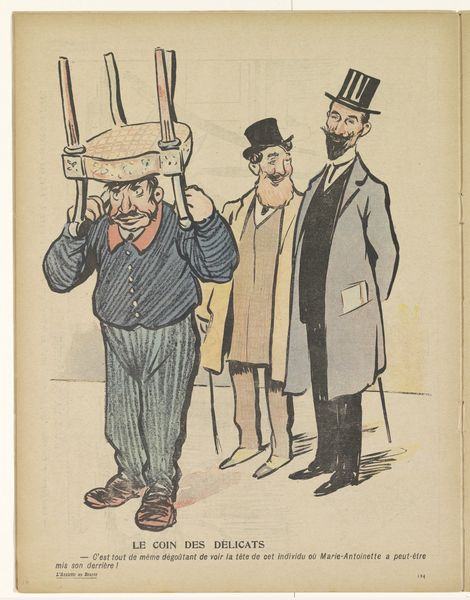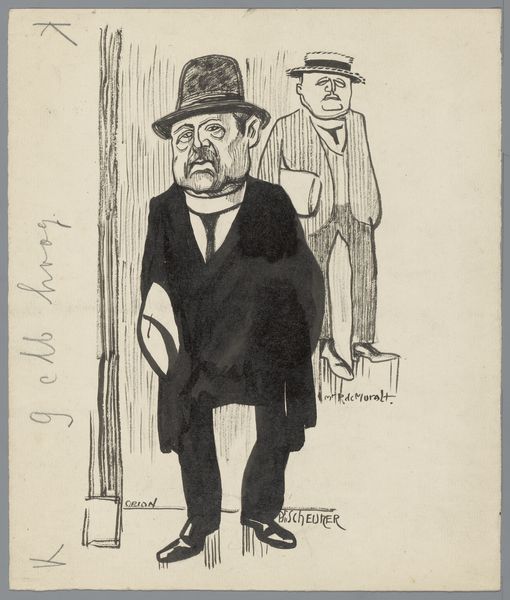
drawing, ink, pen
#
portrait
#
drawing
#
comic strip sketch
#
caricature
#
sketch book
#
cartoon sketch
#
personal sketchbook
#
ink
#
sketchwork
#
ink drawing experimentation
#
pen-ink sketch
#
sketchbook drawing
#
pen
#
cityscape
#
storyboard and sketchbook work
#
sketchbook art
Dimensions: height 214 mm, width 249 mm
Copyright: Rijks Museum: Open Domain
Curator: Patricq Kroon's pen and ink drawing, "Minister S. de Vries met tuba," created between 1918 and 1921, is what we'll be discussing today. It appears to be a caricature. My first impression is one of potent satire; it's got a very aggressive edge with the exaggerated features and stark lines. Editor: Absolutely. Kroon uses caricature as a lens to examine power dynamics at play. We have a stern minister in the background, seemingly observing, maybe judging, the foregrounded figure who appears weighted down, almost imprisoned, by an instrument labeled "Financien," finance. Curator: Precisely. Notice how Kroon uses the tuba itself as a symbol. Its prominent placement and the bold "Financien" text essentially turns it into an instrument of torture, pinning the figure down. Tuba can often represent announcing, proclaiming something…here it seems that the proclaimed message is of the financial burden. What cultural echoes do you hear in it? Editor: The figure carrying the "Financien" tuba brings to mind classical depictions of Atlas carrying the world, or perhaps Sisyphus condemned to endlessly roll a boulder uphill. He’s burdened by an overwhelming, perhaps unjust, financial system. And the figure lurking in the window – what does that say? Curator: The shadowy presence looming from the "Ministerie," is, to me, interesting because he holds a traditional position of authority. I think we can look to wider anti-establishment sentiments that grew in response to social inequalities magnified by World War One’s economic fallout in Europe. Editor: Ah, so the image serves as a visual manifestation of societal anxiety related to the power of governmental institutions during that volatile interwar period, using the finance minister and tuba as symbols of state apparatus and economic pressure. I see it as Kroon capturing a mood, giving visual form to the heavy emotional weight of a nation in crisis. It really highlights how potent symbols are at representing and shaping public consciousness. Curator: Indeed, by intertwining visual metaphor and critical social commentary, Kroon compels us to reconsider the relationship between individual agency and the overarching forces of state financial governance. Thanks for pointing out such a striking reading! Editor: It's the conversation between those forces, between individual and institution that interests me, and how artists visually distill very complex dynamics! It’s these layers, the historical context combined with symbolic representations, that allows us to uncover its complex cultural significance.
Comments
No comments
Be the first to comment and join the conversation on the ultimate creative platform.
